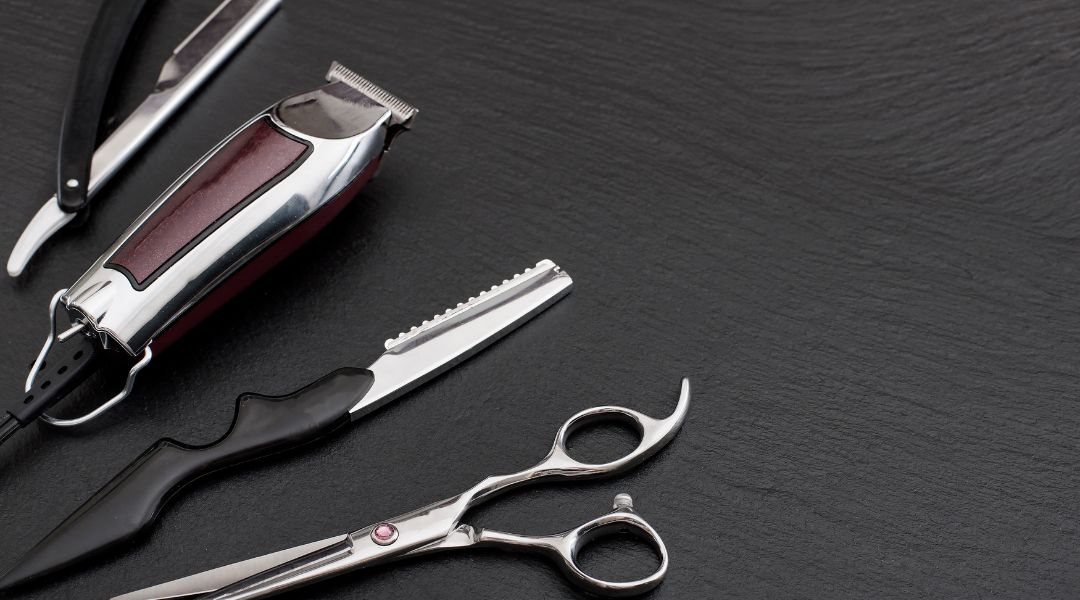Discover the unique paths of barber school versus cosmetology education. While both fields sculpt beauty and style, their focus diverges significantly. Barbering dives into traditional men’s grooming, mastering shaves, and intricate clipper work, whereas cosmetology offers a broader beauty spectrum from hair to skincare.
In Texas, aspiring barbers immerse themselves in specialized training that hones these distinct skills within state-of-the-art facilities designed for real-world experience, ensuring graduates aren’t just proficient but excel in the art of men’s styling and customer satisfaction.
Core Curriculum: Barbering vs. Cosmetology
Barber schools dig into specific haircuts you’ll find in a barbershop. You learn tools like straight razors, which are not used much in cosmetology courses. A barber’s skill set includes classic masculine styles and beard designs requiring clippers and extensive razor work.
Cosmetology programs offer broader beauty skills, such as makeup application and skin care, but less focus on specialized barbering techniques. The licensing paths differ, too. Each has unique steps to follow for certification. If Texas is where you plan to cut hair, knowing local tastes matters.
Here, traditional cuts remain king, a fact that any reputable Texan barber school teaches well.
Specialty Tools and Techniques Compared
In barber school, you learn to ace short haircuts with tools like electric trimmers and straight razors. It’s fast; some programs wrap up in just six months. Unlike cosmetology students who study skincare or nail services, barbers focus on shave mastery. Think hot towel wraps followed by a precise razor glide for the perfect face shave.
While both trades wield scissors, only beauty schools deep dive into long styles and coloring techniques, from selecting toners to applying extensions that require detailed training in the chemistry behind the products used. Cosmetologists have an arsenal of items like serums and texturizing sprays at their disposal but don’t expect them to offer beard dying. That’s more a barber’s realm despite their basic dyeing know-how.
Texas State Licensing Requirements Examined
In Texas, you should know that new rules are changing the game for barbering licenses. Schools teaching hair skills must get approval from TDLR about their eligibility to take the written licensing exam.
What’s important is your hours of study before taking licensing exams hit home, a total of 1,000 school hours to apply early. Otherwise, tack on another 200 for specific beauty practices like mani-pedis. Stay sharp because dual license shops now have paths toward full-service rights, too, while specialty spots keep rocking at what they’re good at but only within their licensed skill set!
Keep an eye out. These transitions matter to both upcoming students and seasoned pros alike.
Career Focus: Barbershops Versus Salons
In the realm of hair care, barbers have a unique focus. They cut and color but are experts in facial hair, too. Think straight razor shaves, clean line-ups, or sharp razor fades, which are all mostly for men’s styles.
To be a barber in Texas means about 1,500 hours of learning. Practical work is part of it. Cosmetologists do facials and makeup, among other services, appealing to various career paths, such as film sets. Barbers typically stick to their classic craft in shops dedicated to that artistry.
As you learn at barber school here, business skills get attention because being your own boss is common. Roughly 73% run their show after training! Want this mix of tradition and entrepreneurship? Then, exploring Texas’s programs could shape your future.
Hands-On Training Differences Highlighted
In barber school, your hands-on training zeroes in on men’s hair care. Think shaving and beard work. That’s what sets it apart from cosmetology. While both schools teach cutting skills, barbers focus more on male grooming needs.
In some states, you’ll need extra hours beyond basic cosmetology to master these techniques, a minimum of 200 hours for official licensing as a barber. Cosmetologists cover broader beauty aspects – hair, yes, but also skin and nail services are parts of their repertoire. You practice under real instructors who guide your every snip or polish stroke at an accredited school.
Go one step further with dual licensing through programs if versatility is what you seek. It could just carve out unique career paths within this field!
Course Duration in Texan Institutions
In Texas, you’ll find that barber school requires 1500 hours of training. This means lots of time learning the trade before you earn your license. You won’t need additional classroom time if you’ve been teaching for a while; a minimum experience nets just 500 to 750 more hours for instructors.
Unlike some states where apprenticeships can replace formal education, in Texas, it’s all about those dedicated school hours. Keep this in mind: each moment prepares you not only to pass licensing exams but also to excel once on the shop floor or starting your own place someday.
Employment Opportunities Post-Graduation
Once you step out of barber school, know this: your skillset is in demand. In Texas, licensed barbers find work fast. They cut hair but also style it. Think fades and shaves they’ve mastered.
Not only that, but they trim beards to perfection, too! With a license, the range widens if you learn both cosmetology and barbering skills. Consider adding cosmetology for chemical treatments like coloring or straightening on top of traditional cuts.
This means more jobs can come your way as shops look for versatile talent who can cater to diverse client needs, a double threat with scissors and dye! So think big: dual-certify yourself to stand apart from others who are only skilled in either field. The payoff is a richer toolkit for any grooming job ahead!
Choosing between barber school and cosmetology school hinges on your career goals. Barber schools, like Texas Barber College, focus exclusively on hair-cutting techniques suitable for a typical barbershop setting. Cosmetology programs cover a broader range of beauty treatments, including hair styling, coloring, and skincare.
Attending Texas Barber College may be the right step for you. It offers expertise in men’s grooming and traditional shaving and can prepare you to open your own barbershop.

